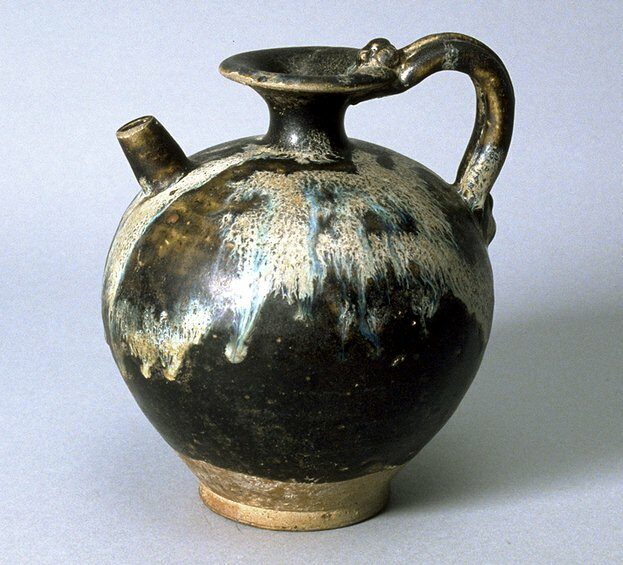Ewer
Chinese

Description
Subject Matter:
A huaci (花瓷), diverse glazed ceramic, or splash-glazed ewer of the Tang dynasty (618-906).
Splash-glazed wares were made in the Tang dynasty primarily in Henan province, where several kilns that produced them have been found. The earliest discoveries were the kilns of Huangdao in Jiaxian, after which these wares are often named, though other kiln sites have been found in the area of Jiaocheng, Shanxi province. This ewer was probably from the Dundian kilns in Lushan county.
The brown glazes applied to the body typically stop short of the base. The whitish glaze with pale blue suffusion is the result of layering it on top of the brown glaze before firing.
Physical Description:
A globular stoneware ewer with a narrow foot and narrow trumpeted neck with direct rim, short straight spout placed high upon the shoulder. The ewer has a coiled handle with articulation extending from the mouth to the shoulder, and is covered in a dark brown glaze stopping high above the foot, with white glaze applied on top of the dark brown on the shoulder, creating a mottled effect with bluish suffusions.
Usage Rights:
If you are interested in using an image for a publication, please visit https://umma.umich.edu/request-image/ for more information and to fill out the online Image Rights and Reproductions Request Form.